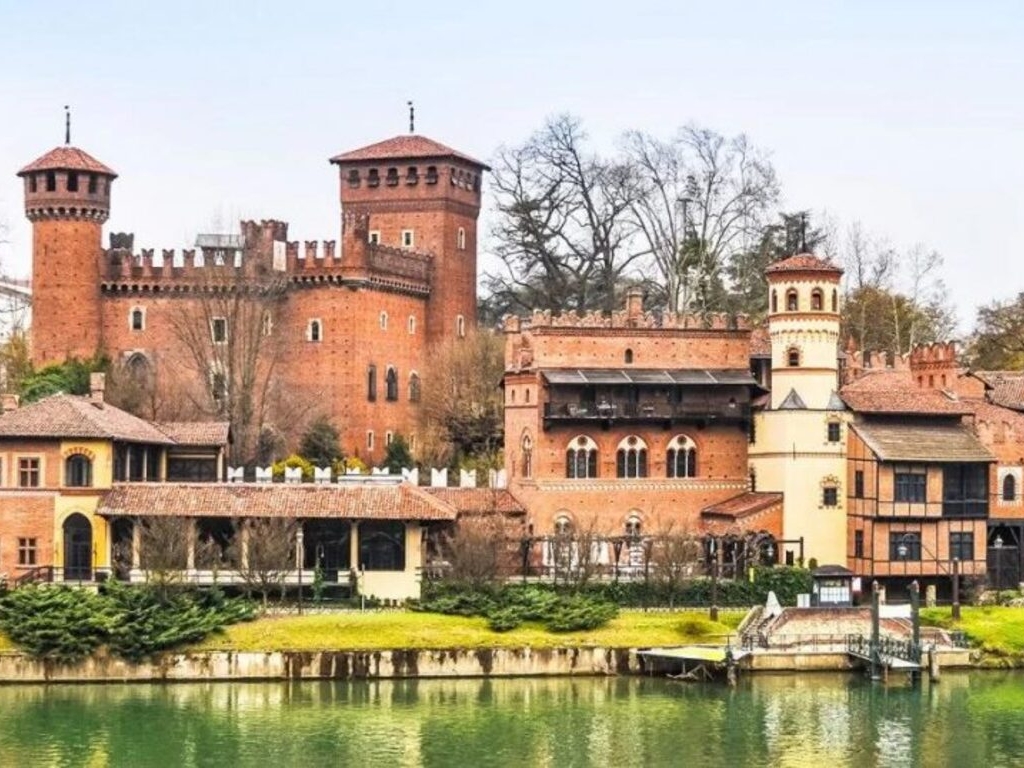The Parco del Valentino, located along the banks of the river Po, is a famous public park in Turin, whose name seems to derive from an ancient chapel dating back to the first Roman settlements, which kept the relics of the patron saint of lovers.
Today, the Valentino Park covers an area of 550,000 square metres and, as well as being an important green lung for the city and its inhabitants, it stands out for its rich natural heritage. Initially inhabited by the Birago nobles, the entire area was purchased in the mid-16th century by Emanuele Filiberto di Savoia and from that moment onwards underwent a major transformation that took it from a river park to an organised structure with refined gardens.
It was only in the 19th century, however, that the famous French landscape architect Barrillet-Dechamps modified the park to give it its current romantic imprint with avenues, gardens, groves and small artificial valleys. It was officially inaugurated in 1858 on the occasion of the National Exhibition of Industrial Products and over time it has continued to host various international events.
Inside, it is possible to admire many works of art, including the imposing twelve-months fountain by Carlo Ceppi, the statues of Massimo d'Azeglio and Ascanio Sobrero, the first person to synthesise nitroglycerine, as well as the artilleryman's arch designed by Canonica, now also known as the Arc de Triomphe due to its similarity to the French arch.
Certainly very interesting is the Borgo Medievale located inside the park and accessed by crossing a drawbridge. It is a real open-air museum and was created in 1884 as the Ancient Art section of the Italian General Exhibition, reproducing a 15th century feudal village on the banks of the Po.
The aim of the project was not only didactic but also to protect the historical and artistic heritage of Piedmont and the Aosta Valley. The settings and decorations were faithfully reproduced thanks to the work of many artists, technicians and historians, including the Portuguese architect Alfredo d'Andrade.
Inside the village you can also admire many craft workshops that testify to the tradition of working with materials as opposed to the growing mass production; hence the potter's, apothecary's, weaver's, blacksmith's, coppersmith's or carpenter's workshop.
The Rocca, the focal point of the village and representative of a fortified manor with perfectly furnished rooms and a wealth of furnishings, is of great value. Given the enormous success of the exhibition, the village was not destroyed at the end of the exhibition as initially planned and today is part of the Civic Museums of Turin.
The Valentino Castle, located in the park of the same name, was bought by Emanuele Filiberto of Savoy in 1564 and had various uses before becoming the seat of the Faculty of Architecture of the Polytechnic of Turin.
Two years after an initial extension in 1578, the castle was inherited by Carlo Emanuele I and later passed into the hands of Filippo I d'Este, but it was thanks to Maria Cristina di Borbone, wife of Vittorio Amedeo I di Savoia, that the castle experienced its greatest splendour. The Madama Reale received it as a wedding gift from her husband and began a series of lengthy renovations and remodelling works with the intention of transforming the residence into a Maison de pleasance according to the French taste of the time. Between 1620 and 1621 the engineer Carlo di Castellamonte supervised the transformation of many rooms on the first floor, including the Green Room, the Rose Room, the Zodiac Room and others.
In the second period of renovation in 1645, after her husband's death, the castle was enriched with three connected frontal pavilions, a marvellous courtyard of honour and the completion of several rooms, including the War Room, the Hunting Room and the Hall of Magnificence.
However, its current form is due to the last intervention, completed in 1660, to which we owe the typical French sloping roofs and the new external pediment. Many artists were involved in the decorations during these alterations, including Bianchi, Casella, Bernardino Quadri and Recchi.
Unfortunately, as with other residences, the castle also took on a military function during the French occupation in the 19th century and maintained this use until 1857, when Count Cavour commissioned the architects Ferri and Tonta to prepare the castle for the National Exhibition of Industrial Products the following year.
In the second half of the 19th century the castle became the seat of the Royal Industrial Museum and the Royal School of Application for Engineers, but it was only in 1906 that they were united to form the Royal Polytechnic of Turin.
Today the castle, after further renovations due to damage caused by the world wars, fortunately still retains many paintings and decorations from the 1600s and is part of the UNESCO heritage.
